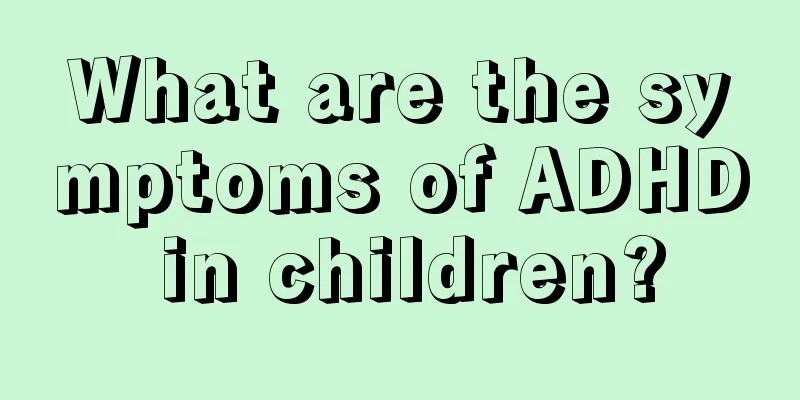What's the matter with the birthmark on the back of the baby's head?

|
What’s going on if my baby has a birthmark on the back of his head? Because the back of the head is more hidden, mothers sometimes often overlook this place when checking whether their babies have birthmarks. Sometimes the baby's birthmarks are congenital, but sometimes the appearance of the baby's birthmarks is caused by acquired factors. If you suddenly find a birthmark on the back of your baby's head, don't panic. Find out the cause of the birthmark before deciding whether to go to the hospital for treatment. 1. External environment: Environmental pollution is one of the main causes of birthmarks. When the human body is stimulated by the polluted external environment, it will show different manifestations, and birthmarks are one of them. 2. Living environment: mainly refers to the acquired environment. Due to certain bad problems in personal lifestyle, such as long-term irregular eating, irregular personal life and uncontrolled overeating, it is possible that certain conditions may stimulate the body and form birthmarks. 3. Genetic factors: Although this factor is generally believed to be the main factor causing birthmarks, there is no conclusive scientific basis so far. Some biologists also believe that birthmarks are caused by chromosomal mutations during human evolution, which are then reflected in human skin through inheritance. 4. Malnutrition: The human body lacks certain nutrients such as calcium, iron, zinc, magnesium and other trace elements and phenylalanine, tyrosine, etc., which can easily affect the biochemical process of pigment synthesis, resulting in abnormal increase in pigment secretion by pigment cells, and then transmitted to the epidermis through nerves, gradually spreading and forming birthmarks. Birthmarks are medically called "mother spots" or "moles". They are abnormal proliferation of skin tissue during development, showing abnormal shapes and colors on the skin surface. Birthmarks can be found at birth, or they may gradually appear a few months after birth. Birthmarks can generally be divided into pigmented and vascular types. Common pigmented types include Ota's nevus, congenital melanocytic nevus, cafe au lait spots, etc., while vascular types include port-wine stains, strawberry hemangiomas, etc. The incidence of birthmarks in newborns is about 10%, which can be said to be very common. Most birthmarks only affect the appearance and do not require special treatment. However, some birthmarks may cause abnormalities in body organs and may even lead to malignant changes, so they must be treated actively. After knowing what is going on with the birthmark on the back of your baby's head, if you are worried that the birthmark on the back of your baby's head is combined with lesions in other organs of the body, it is recommended that you take your baby to do relevant examinations. If it is confirmed that the birthmark on the back of your baby's head is just a simple birthmark, no treatment is needed, especially for baby girls who will have longer hair, and the birthmark on the back of the head can definitely be covered up. |
<<: How to treat Henoch-Schonlein purpura nephritis in children
>>: What should I do if my newborn has diarrhea?
Recommend
What should I do if my 1-year-old baby suddenly has a fever?
Some babies' bodies are very fragile. Once a ...
What causes fever after vaccination in children?
Generally, babies will not show any abnormal cond...
What to do if your child has fat particles
The main reason why children have fat particles i...
12-year-old child can't sleep at night
Insomnia is common in life. There are many reason...
How to treat abdominal cysts in children
Children are the fruit of their parents' love...
Is it necessary to test bone density in children?
For some new mothers, they are always caught off ...
What to do if your baby's temperature fluctuates
Two-year-old babies are relatively young and have...
Treatment of thick white tongue coating in two-month-old baby
A two-month-old baby has a thick white tongue coa...
How to hold a newborn baby
After the baby is born, many parents and friends ...
Why does my baby wake up crying in the middle of the night?
When the child is relatively young, every mother ...
Which physical method of reducing fever is better for babies?
Medical technology is constantly innovating, so n...
How to relieve baby's cold and stuffy nose
When babies have a cold and stuffy nose, if it is...
The fastest treatment for Ganji in children
Children's resistance is relatively weak, so ...
How to treat children's autumn diarrhea
Children's physical health has always been a ...
How to improve children's memory?
Children are in a critical stage of growth. Our m...









